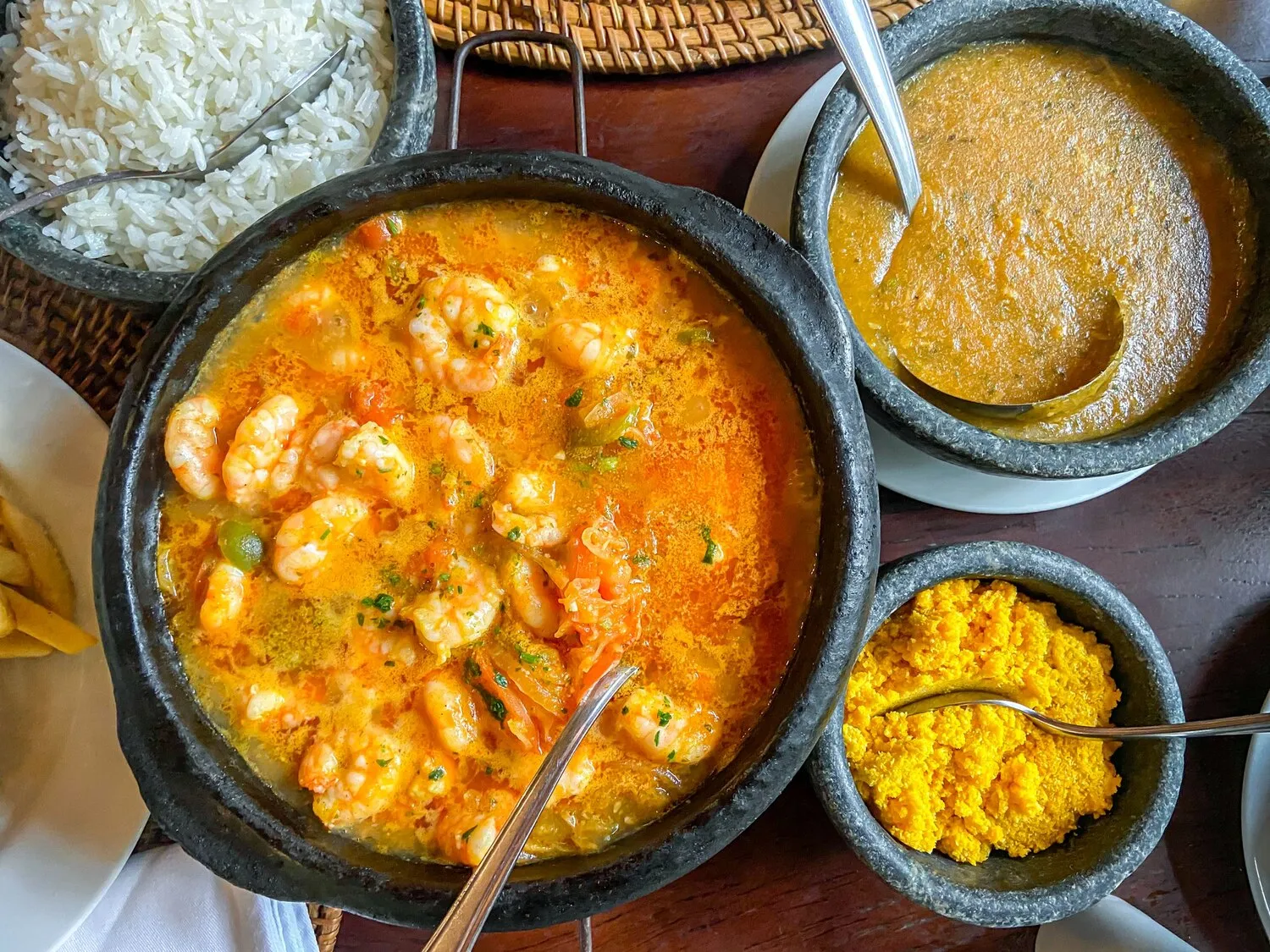
Moqueca Capixaba
A seafood stew prepared with fish (often sea bass or grouper), tomatoes, onions, garlic, cilantro, and annatto seeds. It's cooked slowly in a clay pot.
Nutrition Facts
* The % Daily Value (DV) tells you how much a nutrient in a serving of food contributes to a daily diet. 2,000 calories a day is used for general nutrition advice.
Sabor Macaense
Moqueca Capixaba's history is deeply intertwined with the indigenous peoples of Espírito Santo, Brazil. They were the first to cook fish in clay pots. Over time, African and European influences were incorporated, shaping the dish into its current form. The use of annatto seeds (urucum) likely originates from indigenous traditions, while the arrival of tomatoes, onions, and garlic reflects European contributions. Enslaved Africans brought their culinary knowledge which subtly influenced the stew as well.
Moqueca Capixaba is more than just a dish; it's a symbol of Espírito Santo's cultural identity, family gatherings, and coastal heritage.
Family Tradition
Preparing and sharing Moqueca Capixaba is a cherished family tradition, passed down through generations. Recipes often vary slightly from family to family, reflecting personal preferences and regional variations.
Regional Identity
Moqueca Capixaba is a signature dish of Espírito Santo, proudly representing the state's culinary heritage and coastal lifestyle. It is often served at celebrations and festivals, showcasing local ingredients and cooking techniques.
Clay Pot Significance
The clay pot is not just a cooking vessel; it's an integral part of the Moqueca Capixaba experience. The slow cooking in the clay pot allows the flavors to meld together beautifully and imparts a unique earthy aroma to the dish. The clay pot itself is often a treasured family heirloom.
Moqueca Capixaba is characterized by its fresh, vibrant, and subtly sweet flavors, perfectly balanced by savory fish and aromatic spices.
The dominant flavors are derived from the sweetness of fresh tomatoes and onions, enhanced by the pungent aroma of garlic and cilantro. The fish, typically sea bass or grouper, provides a delicate, savory base. Annatto seeds (urucum) impart a mild, earthy flavor and a distinctive reddish-orange hue. The absence of dendê oil (palm oil) and coconut milk, which are used in the Bahian Moqueca, keeps the Capixaba version lighter and highlights the natural flavors of the ingredients.
Use Fresh Ingredients
The quality of the ingredients is crucial. Opt for the freshest fish, ripe tomatoes, and fragrant herbs for the best flavor. Fresh cilantro makes a huge difference.
Layer the Ingredients
Layer the ingredients in the clay pot to ensure even cooking and flavor distribution. Start with a layer of onions, followed by tomatoes, garlic, and then the fish. Repeat the layers, finishing with tomatoes and onions.
Cook Slowly
Moqueca Capixaba is best cooked slowly over low heat. This allows the flavors to meld together beautifully and prevents the fish from drying out. Avoid stirring too much, as this can break up the fish.
Control the Liquid
The tomatoes and onions will release liquid during cooking. Add a small amount of water or fish broth if needed, but avoid adding too much, as the Moqueca should have a thick, stew-like consistency.
Don't overcook the Fish
The fish should be cooked until it is just opaque and flakes easily with a fork. Overcooked fish will be dry and tough.
Explore additional Stew dishes and restaurants
Explore StewDiscover top dining spots and culinary experiences in Macaé.
Explore MacaéLearn more about the food culture, restaurant scene, and culinary heritage of Brazil.
Explore Brazil